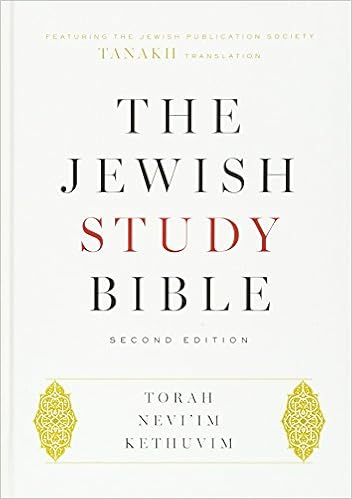


Over the past few weeks, I've delved deeply into the world of Genesis. I've primarily drawn upon Reading the Bible Again for the First Time by Marcus Borg, the essays and textual annotations in The Jewish Study Bible, and "The Bible Project" podcast's "God Series" episodes. The first few chapters of Borg's book offer the best overview of how to properly read the Bible, while laying bare the bankruptcy of the literal, fundamentalist reading that came about in the 19th century. The Jewish Study Bible contains hundreds of pages of textual criticism, most of which I read or skimmed. The Bible Project podcasts do a particularly good job of detailing ancient Hebrew conceptions of God, and how they differed from the modern Christian concept of God.
Here are some of my takeaways:
- The Bible should be read in a historical-metaphorical sense. We should allow scholarly criticism to inform our understanding of the Bible's historical context, while also engaging with the text in a dialogical manner. This means contemplating the range of mythic meanings the text engenders, critiquing the text as a human document, and allowing the text to challenge us and point us to God.
- Genesis has not one, but at least 4 fall narratives: Adam and Eve, Cain and Abel, the "sons of God" taking women as wives, and the Tower of Babel. Each of these brief narratives highlight different aspects of the problem that we face as fallen creatures, and the allowances God made for it.
- Ancient Hebrews conceived of a "divine council" headed by Jehovah but composed of other spiritual beings, who we now call angels. The "sons of God" taking women as wives is actually a fall narrative of some of these spiritual beings. In contradistinction to humans desiring to become spiritual beings or reach divine status, these spiritual beings desired to become physical and mate with human women, again upending the natural order.
- The dominant source theory for over a century has been that of Julius Wellhausen, who in the late 19th Century postulated four sources of the Pentateuch (Genesis-Deuteronomy), which were later weaved together with very light editing in the post-exilic period. These consist of the J (Yahwist) source from the 9th century, the E (Eloist) source from the Northern Kingdom in the 8th Century, the 7th Century D (Deuteronomist) source, and the P (Priestly) source from the 6th-4th Centuries BCE. Though postmodern and Jewish criticism has pushed back against some of the implications of his theory, it remains the most useful tool in resolving and understanding the conflicts and contradictions evident throughout the Pentateuch.
- The histories recorded in the Bible, especially prior to Solomon's reign, often do not match up with archeological and other extra-Biblical textual evidence. Though literalist scholars go to great lengths to try to resolve these differences (as they try to resolve the contradictions throughout the Bible), it is far more reasonable to view the narratives in the Pentateuch as mythologized history, in which the lessons the stories teach are the primary concern, rather than the historical accuracy of the events.
- The Bible is far more interesting and infinitely less distressing when read as a human document with the above ideas in mind, instead of thinking of it as magically divine in origin. And this drives at the core of what it means to have faith and be a follower of God. If we believe that what God most wants from us is to believe highly problematic statements to be factually true, we will ultimately leave the faith, as I did for a time. But if, instead of seeing faith as intellectual assent to a particular dogma, we understand faith as a trusting and deepening relationship with the God to whom the Bible points, the Bible becomes and inexhaustible source of challenge, meaning, and truth.